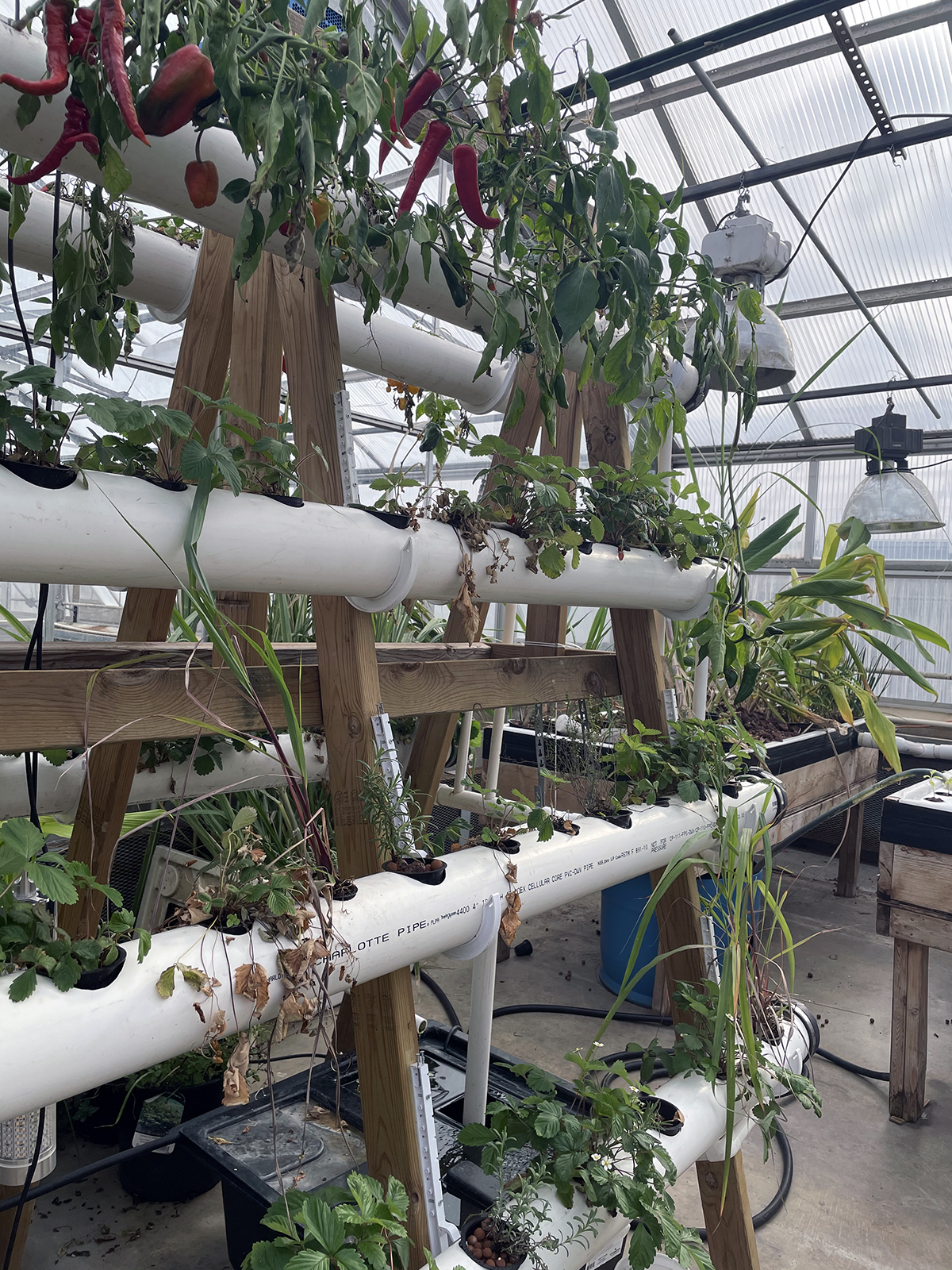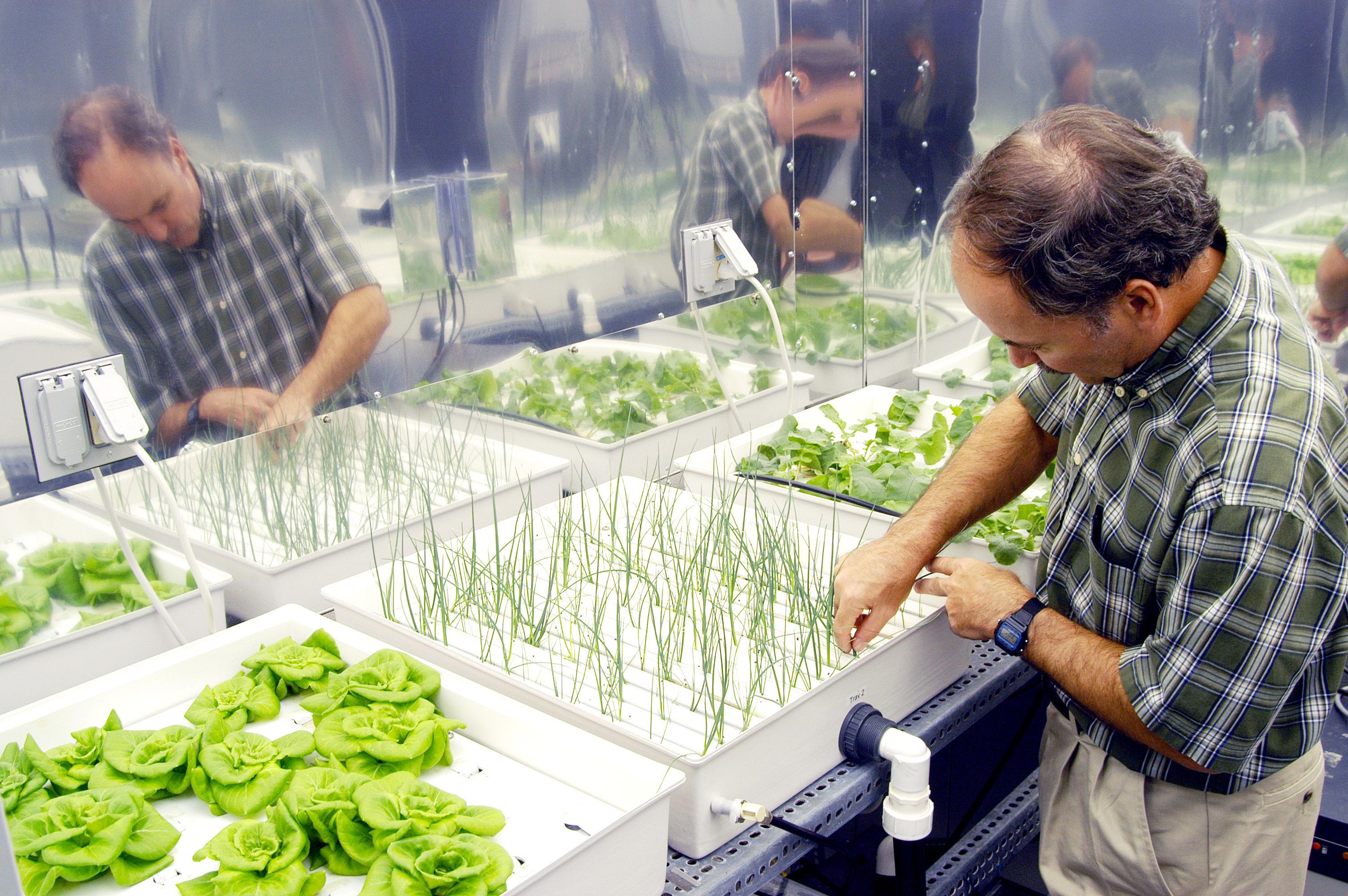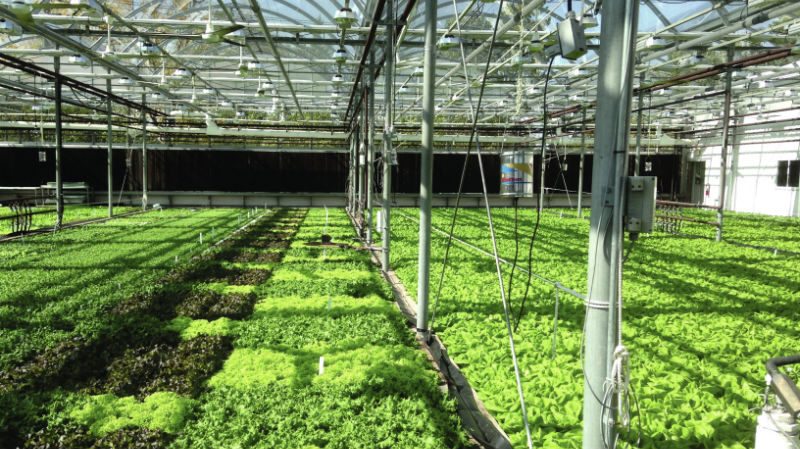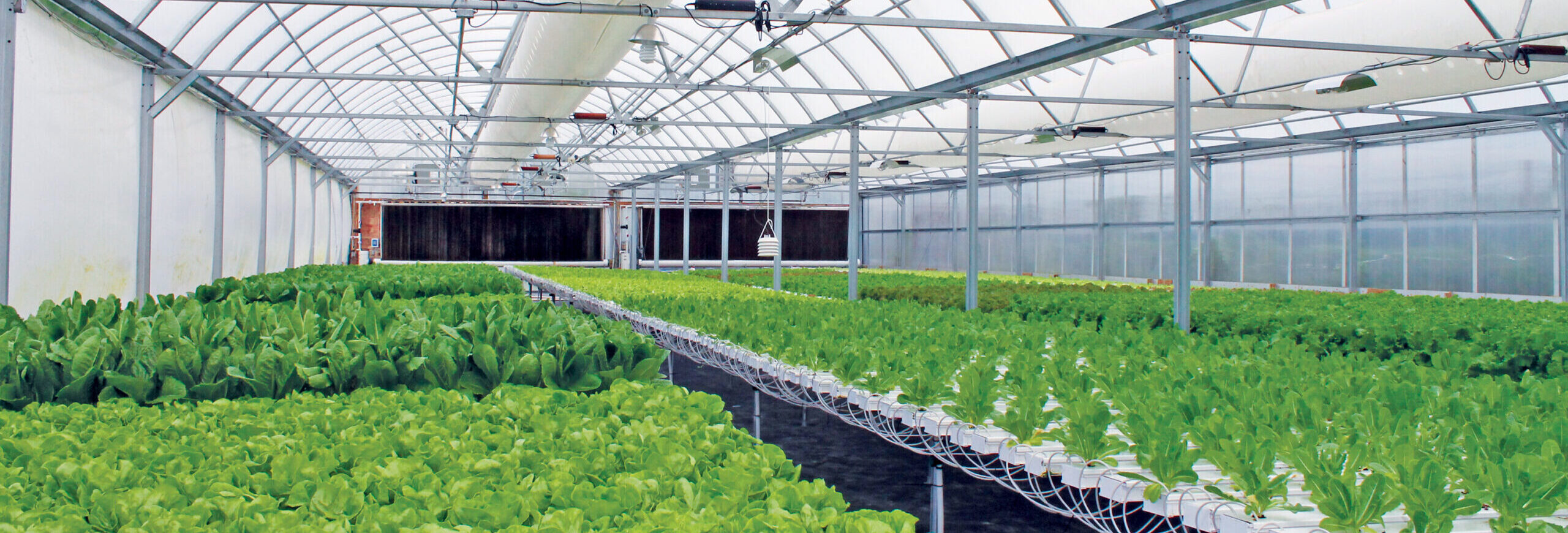Imagine stepping into your very own We’ve manufactured commercial growing systems for large scale production Submerging the roots of crops in nutrient dense water increases fruit and vegetable crop quality. Using a fertilizer in the Turn your warehouse into a productive greenhouse using commercial hydroponic system using a circulation pumps. to support a hydroponic structure. Hydroponics system, filled with lush greenery and bountiful harvests, all year round, regardless of the weather outside.
Picture having complete control over all aspects of your garden's environment – from temperature and humidity to the nutrient intake of each plant – guaranteeing optimal growth and produce.This might seem like a dream for many gardening enthusiasts, but you don't have to pinch yourself! This tantalizing vision is not only achievable but thriving in the world of greenhouse hydroponics.
Join us in exploring this innovative cultivation method that combines the best of greenhouses and soilless growing techniques in our comprehensive guide to greenhouse hydroponics. Get ready to embark on a journey that will change your perspective on gardening and revolutionize your green thumb!
Source: m.media-amazon.com
1. The U.S embraces this technique of submerging plants. CropKing is one of the suppliers that provide DWC systems for indoor commercial hydroponics. Introduction to Commercial Greenhouse Hydroponics
Commercial greenhouse hydroponics is an innovative method of growing plants without soil, making use of nutrient-rich water instead. This modern approach to farming can be better understood by exploring resources such as Hydroponics 101: A Complete Beginner's Guide to Hydroponic Gardening by Deschain Dean and Hydroponics Greenhouse: The Complete DIY Beginner's Guide to Learn How to Build Easy Systems for Growing Vegetables, Fruits, and Herbs All Year Round by Richard Roberts. Both these informative books offer valuable insights into the world of Indoor and commercial hydroponic gardening using DWC systems and other technologies..
Some key benefits of commercial hydroponic/ Greenhouse Hydroponics, a system where plants may be used in a submerged environment. The benefits of precision fertigation in gardening include, and may be used in hydroponic systems where plants are submerged in nutrient solution. - Efficient use of water, making it a sustainable option, especially if a circulation pump is used for nutrient solution submersion. - No soil required, making it suitable for areas with poor soil quality - Reduced pests and diseases, as soil-borne diseases are eliminated - The ability to grow plants All-year-round, hydroponic growing systems allow crops to be harvested due to their controlled environment.
By following the instructions provided in these books, beginners can start with hydroponic growing systems Successfully set up the plant's roots in their hydroponic drip system and NFT system, submerged in nutrient solution with our technical support. We also offer system installation services throughout the United states. gardens and reap the benefits of this revolutionary method of agriculture. Always remember, it is crucial to choose the right equipment, maintain pH and EC levels, and overcome common issues in commercial hydroponic gardening for a high yield.
Up next, let's dive into the numerous benefits of commercial hydroponic gardening and why it is increasingly becoming popular among farming enthusiasts and entrepreneurs. Stay tuned for various ways that recirculating systems can help growers. advantages and breakthroughs that hydroponics Thin film technology can bring advancements to agriculture.

Source: www.grovida.us
2. Benefits of Commercial Hydroponic Gardening
The benefits of commercial hydroponic gardening are numerous, and it has even been proven that using nft system can increase plant yields and reduce waste significantly. Some advantages of this system, which may be used in the U.S, include:
1. More efficient use of water: Hydroponic systems use 10 times less water than traditional soil-based gardening, as water can be reused in the system. 2. Space-saving: In an indoor growing environment, hydroponic gardening requires 20% less space than soil-based growing., allowing plants to grow upright and take up less room. Here are 3 overview points to consider about the commonly used practices in current culture. Weather-independent: Hydroponics allows you to grow plants in a climate-controlled environment, unaffected by harsh weather conditions, leading to higher crop yields. 4. Fewer synthetic chemicals needed with use of system and nft system. With minimal pest attacks in a greenhouse, Thin film technology can improve efficiency in hydroponic systems. eliminate the need for synthetic pesticides, resulting in healthier plants. 5. Faster and better nutrient supply: Hydroponic systems provide direct access to nutrients and oxygen, enabling plants to grow faster and healthier.
With these benefits, it's no wonder why the use of a circulation pump in a hydroponic system in the U.S may be used. hydroponic greenhouses are becoming more popular in the world of agriculture. In the next section, we will delve deeper into understanding plant growth in water and how it affects the hydroponic Adjusting the dose per plant is a fundamental process in fertigation. Stay tuned for more information on this fascinating topic!

Source: m.media-amazon.com
3. Understanding Plant Growth in Water for Greenhouse Hydroponics
Understanding plant growth in water is key to successfully growing plants hydroponically. In hydroponics, traditional soil or soilless mixes are not used; plants are either supported by an inert growing medium or nothing at all, with nutrients supplied directly at the root zone (Hydroponics 101 - The Complete Guide To Hydroponic Growing). One benefit of hydroponic gardening is that it is more efficient, using far less water compared to traditional growing methods. In many cases, water can be reused, increasing efficiency further and saving money.
Moreover, hydroponic gardening can lead to quicker growth rates, with plants growing 25% faster than in standard soil (Hydrobuilder Learning Center). Using an automated system means a shorter time to harvest and more harvests per year. Hydroponic harvests can also be up to 30% heavier than soil-grown plants. However, hydroponic gardening, where plants are often submerged in a nutrient solution, is more complicated and can be more expensive than traditional soil growing, with less room for error.
To aid you in learning about hydroponic gardening, books like "Hydroponics and Greenhouse Gardening: 3-in-1 Gardening Book to Grow Vegetables Herbs and Fruit All-Year-Round" by Richard Bray contain valuable information (Amazon.com). It offers guidance on choosing the right system, equipment, and nutrients crucial for successful hydroponic gardening.
Now that you have a basic understanding of plant growth in water, let's explore the different types of commercial hydroponic systems available in the next section to help you make an informed choice in your hydroponic farming Venture into commercial growing systems as a profitable business idea.

Source: extension.umn.edu provides technical support throughout the United States.
4. Types of Commercial Hydroponic Systems
Hydroponic systems have revolutionized the agriculture industry, offering various advantages, such as better nutrient control, faster growth rates, and water efficiency. To help you decide which system suits your venture, let's discuss the most popular types of commercial hydroponic systems:
- Nutrient Film Technique (NFT): An active recovery system featuring tilted channels in which plants are suspended by foam net pot inserts, allowing nutrient solutions to flow over the exposed root ends like a film. Best for lightweight plants with small root systems, it's popular among commercial growers due to its ease of use and ability to support multiple plants. - Deep Water Culture (DWC): A system particularly suitable for large plants with big root systems, DWC suspends the roots of plants in aerated nutrient solutions. Air stones or diffusers ensure that plants don't drown in the constant nutrient solution. - Wicking: A passive, electricity-free method, wicking involves placing plants on a tray of growing medium on top of a nutrient-filled reservoir. Nylon wicks absorb the solution, transferring nutrients to the plants' root systems, making it a cost-effective option for both commercial and hobby growers. - Ebb and Flow (Flood and Drain): An active recovery method, ebb and flow periodically floods the grow bed to deliver nutrients and oxygen to the roots. Equipped with a timer and overflow tube, the system does not constantly expose plants to water supply.
Ready to delve deeper into hydroponic gardening? Our next topic, "Equipment Needed for Commercial Hydroponic Gardening," will offer essential information to help you get started.

Source: extension.umn.edu
5. Equipment Needed for Commercial Greenhouse Hydroponics Gardening
Commercial hydroponic solutions often supply commercial growers with types of hydroponics systems including irrigation and DWC systems. gardening is an innovative and efficient way to grow plants, but it does require specific equipment to ensure success. Here is a list of turn-key solutions commonly used in the indoor farming industry. Essential equipment needed for commercial hydroponic gardening indoors. gardening:
1. Growing System: The type of hydroponic system you choose will depend on the specific needs of your plants and the scale of your operation. Common systems in commercial hydroponics that recirculate water and nutrients include nutrient film technique (NFT), aeroponics, irrigation, and DWC systems. Deep water culture (DWC) systems are highly efficient for commercial and indoor hydroponic gardening. (DWC).
2. Grow Lights: Whether you're using natural sunlight or artificial light, ensure your plants receive enough light for proper growth and development. Some popular grow lights include LED, high-pressure sodium (HPS), and metal halide (MH) lamps.
3. Submerged Nutrient Solution: A well-balanced nutrient solution is crucial for The optimal plant growth achieved using types of commercial hydroponics systems and proper indoor growing conditions can meet the needs of many growers.. Choose the right nourishment and mix it with water to supply the plants with essential elements needed for growth and development.
4. Water and Nutrient Delivery System: To provide the nutrient solution to your plants, you'll need pumps, tanks, and plumbing systems capable of handling the demands of your commercial hydroponic Grow a lush indoor or commercial hydroponic garden using irrigation and DWC systems.
5. Environmental Control System: Maintain temperature, humidity, and air circulation by using heaters, fans, humidifiers, and dehumidifiers as needed.
6. Monitoring Devices: Keep a close eye on your plants by using sensors for pH, electrical conductivity (EC), and moisture levels.
7 systems will help with growth and development. Grow Medium: Depending on the hydroponic system you employ, you may need a grow medium like perlite, coconut coir, or Rockwool to support your plants.
8. Support System: To elevate larger plants, they may require trellises, cages, or other forms of support to ensure they thrive indoors. Different types of crops like lettuce and tomato grow upright and efficiently in commercial hydroponics systems. utilize space.
In the next section, we will discuss how to choose the right nutrients for your plants to ensure Technical support for optimal growth and development in your commercial hydroponic. garden.

Source: upload.wikimedia.org
6. Choosing the Right Nutrients for Your Plants
Choosing the right Allocating the precise nutrient dose per plant is crucial in hydroponic gardening., as plants rely entirely on the nutrients you provide for their growth and development. When selecting the appropriate hydroponic nutrients When planning your garden indoors, consider the following:
- Essential Nutrients optimized for the thin film technique can boost production in growing plants. All plants need a balanced mix of the following key nutrients: Nitrogen (N), Phosphorous (P), Potassium (K), Calcium, and Magnesium. The proportions of these nutrients should be accurately measured for hydroponic growing systems. nutrients may differ depending on the plant species and growth Preparing the precise nutrient dose is an important stage in hydroponic gardening.
When considering water solubility in fertigation of hydroponic systems- Ensure that the nutrients you choose are 100% water-soluble. This is important because, in hydroponic systems, nutrients must be dissolved in water for the plants to absorb them. - Formulation: Hydroponic nutrients The nutrients used in hydroponic systems must be 100% mineral salts (non-organic) to allow for precise nutrient delivery during fertigation. Also, they must include all 14 essential elements (excluding carbon and oxygen, which plants obtain from the air).
To ensure healthy, thriving plants, monitor and maintain the pH and EC levels of your nutrient solution consistently. This will allow you to identify potential nutrient deficiencies or toxicities and make adjustments as needed.
In the next section, we will discuss the importance of maintaining pH and EC levels in commercial hydroponic systems, which is crucial for optimal nutrient absorption and overall plant health.

Source: www.grovida.us
7. Maintaining pH and EC Levels on a Submerged Commercial Hydroponic Gardening
Maintaining pH and EC Levels on a Commercial Hydroponic Ensuring the nft system in gardening is functioning correctly is crucial for the health and productivity of plants.. According to Oklahoma State University, optimal pH levels for soilless culture should be between 5 and 6, with the root environment maintained between 6 and 6.5. This is when nutrients are most readily available to plants.
To ensure proper nutrient management, it is essential to:
- Test water for pH, electrical conductivity (EC), and alkalinity. Poor-quality water in types of commercial hydroponics systems can cause nutrient toxicity or deficiency problems. - Monitor total salt concentration by measuring EC, which is a good indicator of salt levels in the solution. A space-efficient hydroponic system A fertigation system can be constructed using PVC tubes and a vertical frame, as suggested by the University of Minnesota Extension. - Use support structures for plants such as net pots, extruded polystyrene sheets, and hydroton pieces to allow adequate nutrient and water exposure to plant roots.
By following these guidelines and carefully monitoring pH and EC levels in a commercial hydroponic gardening setup, you can maximize yields and maintain plant health. In the next section, we will discuss common issues in commercial hydroponic gardening and how to address them effectively. Remember, knowledge is key to overcoming challenges and ensuring a CropKing offers a successful venture in commercial hydroponic systems and indoor growing solutions. agriculture.

Source: gpnmag.com
8. Common Issues in Commercial Greenhouse Hydroponics Gardening
Commercial hydroponic gardening has gained much attention in recent years due to its numerous benefits. However, it also comes with its fair share of issues that need to be addressed to achieve success in this innovative agricultural practice could involve the use of a circulation pump. Some of the common issues that arise in commercial hydroponic gardening include:
1. High initial investment: The cost of setting up a hydroponic The system's modular design can be significantly more complex than traditional soil-based methods which might discourage prospective gardeners from experimenting with this method.
2. Complexity and steep learning curve: Operating a hydroponic system can be quite challenging, especially for beginners. With hydroponic growing systems, there is often less room for error than with soil gardening, and growers need to be diligent in monitoring their water systems and plants' nutrient and pH levels.
3. Potential water and system will help to facilitate growth. nutrient waste: While hydroponic systems generally use up to 10 times less water than conventional methods, inefficient management can still lead to waste. Growers must carefully monitor and adjust water and nutrient levels to prevent such issues.
4. Pest and disease management in current culture: Although hydroponic systems typically have fewer pest problems, pests and diseases can still be a concern. Proper monitoring, prevention, and control measures should be in place to ensure healthy and robust crops.
Despite these common issues, many see a bright CropKing and other suppliers are shaping the future for commercial hydroponic businesses with their innovative systems. gardening in agriculture. By overcoming these challenges, hydroponic systems can yield impressive results in terms of increased plant Optimal growth, higher crop density, and healthier plants can be achieved with the system and nft system.
Stay tuned for our next topic in this comprehensive guide: Harvesting and Yield in Commercial Hydroponic Gardening.

Source: extension.umn.edu
9. Harvesting and Yield in Commercial Greenhouse Hydroponics Gardening
Hydroponic gardening offers a space-efficient and water-saving alternative to traditional soil-based gardening. One popular method is using deep water culture (DWC), where plants are suspended above a tank of water, allowing their roots to absorb nutrients directly from the water. A simple DWC setup can be achieved using a 5-gallon bucket Use a turn-key solution or a plastic storage bin which we've manufactured into a drip system with net pots placed in a Styrofoam lid for plant support.
When growing tomato in indoor growing setups or existing greenhouse, plants hydroponically, it is essential to select the right container size based on the plants' maturity and incorporate an effective support structure, such as extruded polystyrene sheets or PVC tubes. In addition, consider the following factors:
- Cost, aesthetic appeal, and space efficiency - Optimal nutrient uptake through silica supplementation
Adding silica to your hydroponic system can provide various benefits, including:
- Improved plant growth and resilience due to strengthened cell walls - Enhanced nutrient uptake, resulting in improved plant growth and higher-quality crops - Increased resistance to pests and diseases
Incorporating silica in your hydroponic system will not only yield healthier plants but also maximize your harvest. As you successfully navigate the world of hydroponicsWith the vision of higher crop quality, it is important to plan for the future. In our next section, we will discuss the future of commercial hydroponics in agriculture and the role it plays in sustainable food production.

Source: www.growspan.com
10. Conclusion: Future of Commercial Greenhouse Hydroponics in Agriculture
In conclusion, the future of commercial hydroponics in agriculture is promising, as it offers sustainable solutions to the challenges the world is facing due to traditional agricultural practices. Some key facts to note are:
- By 2050, a significant amount of non-frozen land will be needed to meet the global population's calorie needs. - Deforestation, a major driver of biodiversity loss and carbon emissions, is mainly caused by the expansion of agricultural land. - Climate change threatens the An overview of traditional farming methods vs yields from commercial growing systems. agriculture, exacerbating food insecurity in already vulnerable regions. - The COVID-19 pandemic has highlighted the risks associated with encroaching on natural ecosystems, primarily pushed by the necessity for more agricultural land for growing higher quality fruits and vegetables.
Hydroponic farming, a form of controlled environment agriculture (CEA), can address many of these issues by significantly reducing the resources and land needed for growing food. This innovative approach eliminates the need for soil and pesticides, minimizes water usage, and allows for year-round production in any climate. Moreover, indoor Vertical farming utilizing commercial growing systems reduces the risk of crop loss from pest invasions, weather extremes, and other environmental factors while preventing deforestation and reducing our carbon footprint.
In our next section, we will delve deeper into the specific applications of hydroponic technology, discussing how it can benefit small and medium-sized operations. Discover the advantages it brings and the potential it holds to revolutionize the agricultural landscape for generations to come.
FAQ:
Which hydroponic system is best for commercial?
When considering which hydroponic system is best for commercial use, several factors must be taken into account. The most important considerations include efficiency, scalability, and ease of maintenance. NFT (Nutrient Film Technique) systems are popular in commercial operations due to their high efficiency and ability to scale up for larger production. These systems use a shallow stream of nutrient-rich water that flows along a flat surface, providing a constant supply of nutrients to the plants' roots. Additionally, NFT systems are relatively easy to maintain and require minimal labor, making them an attractive option for commercial growers. However, it is important to carefully assess the specific needs and constraints of the commercial operation before making a decision, as factors such as available space, budget, and plant type can all impact the best choice of hydroponic system.Is hydroponics commercially viable?
Hydroponics, the method of growing plants without soil, has gained attention in recent years for its potential commercial viability. With the ability to control environmental factors such as nutrient levels, temperature, and light, hydroponic systems can produce high-quality crops in a more efficient and sustainable manner. This method also allows for year-round production and the ability to grow crops in areas with limited arable land. However, the initial investment in hydroponic systems can be costly, and proper management and expertise are crucial for successful commercial operations. While the potential for high yields and resource efficiency make hydroponics an attractive option, careful consideration of costs and market demand is essential in determining its commercial viability.What are the most profitable plants to grow hydroponically?
When considering the most profitable plants to grow hydroponically, it is important to evaluate factors such as market demand, labor and production costs, and potential yields. High-value crops like herbs, leafy greens, and specialty fruits such as strawberries and tomatoes are often considered the most profitable options for hydroponic cultivation due to their high market prices and production efficiency.- https://www.burpee.com/commercial-gardening: CropKing, similar to Burpee, offers a commercial gardening section on their website where you can find seeds, plants, and gardening supplies specifically tailored for hydroponic and indoor commercial growers.
- https://www.johnnyseeds.com/growers-library/commercial-growerJohnny's Selected Seeds provides a special section for commercial growers which allows growers to find resources, tools, and a wide assortment of seeds suitable for commercial gardening ventures.
- https://www.growerssupply.com/Commercial-Agriculture provides technical support for growers looking for solutions.: Growers Supply specializes in providing commercial agriculture solutions, including greenhouse structures, hydroponics systems, and other products to support large-scale gardening operations.
No comments:
Post a Comment